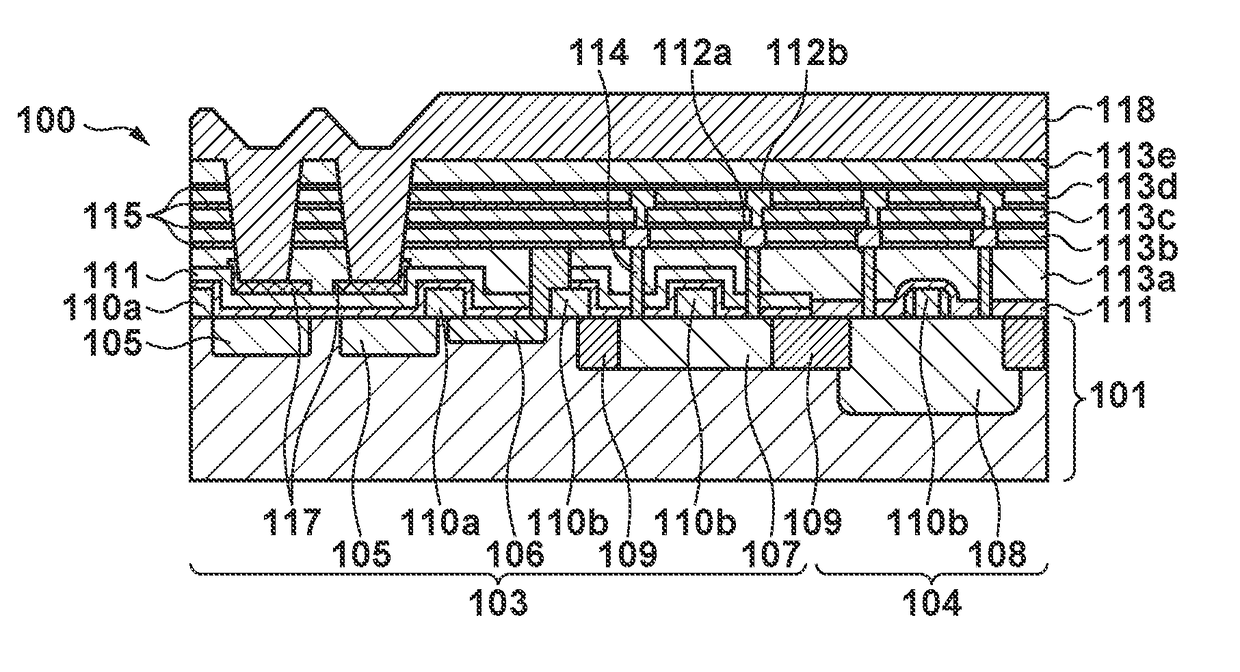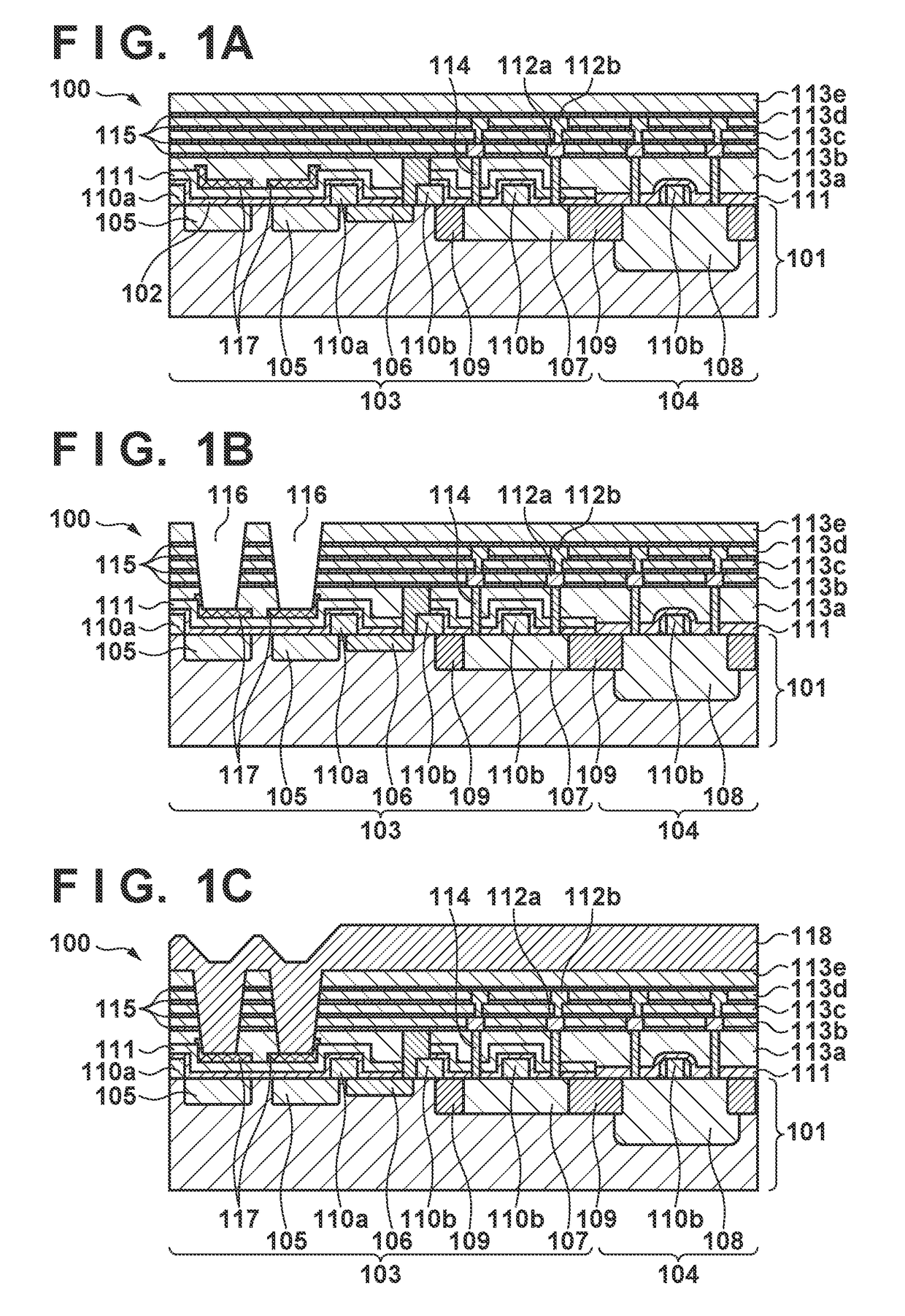Method of manufacturing solid-state image sensor
- Summary
- Abstract
- Description
- Claims
- Application Information
AI Technical Summary
Benefits of technology
Problems solved by technology
Method used
Image
Examples
first embodiment
[0016]A method of manufacturing a solid-state image sensor according to the first embodiment of the present invention will be described with reference to the accompanying drawings. FIGS. 1A to 4C are schematic views of the sectional structure of a solid-state image sensor in the steps according to this embodiment. In each step, the solid-state image sensor halfway through the manufacture will also be referred to as a solid-state image sensor 100.
[0017]First, a semiconductor substrate 101 of the solid-state image sensor 100 is prepared. The semiconductor substrate 101 is a semiconductor material portion of members that constitute the solid-state image sensor 100. For example, the semiconductor substrate 101 includes a semiconductor wafer in which a semiconductor region is formed by a known semiconductor manufacturing process. An example of the semiconductor material is silicon. The interface between the semiconductor material and another material is a principal surface 102 of the sem...
second embodiment
[0071]A method of manufacturing a solid-state image sensor according to the second embodiment of the present invention will be described with reference to FIGS. 6A to 7C. The same reference numerals as in FIGS. 1A to 5 denote parts having the same functions in FIGS. 6A to 7C, and a detailed description thereof will be omitted. An insulating member, which is formed from the first waveguide member 118, the second waveguide member 122, and the low refractive index member 123 in the first embodiment, is formed from only the first waveguide member 118 in the second embodiment.
[0072]FIG. 6A shows the same step as that shown in FIG. 1C of the first embodiment. That is, FIG. 6A shows a state in which the first waveguide member 118 is formed on a plurality of interlayer dielectric films 113a to 113e in which openings 116 are formed. The steps up to FIG. 6A in the method of this embodiment are the same as the steps shown in FIGS. 1A to 1C of the first embodiment.
[0073]In the step of FIG. 6B, ...
PUM
 Login to View More
Login to View More Abstract
Description
Claims
Application Information
 Login to View More
Login to View More - R&D
- Intellectual Property
- Life Sciences
- Materials
- Tech Scout
- Unparalleled Data Quality
- Higher Quality Content
- 60% Fewer Hallucinations
Browse by: Latest US Patents, China's latest patents, Technical Efficacy Thesaurus, Application Domain, Technology Topic, Popular Technical Reports.
© 2025 PatSnap. All rights reserved.Legal|Privacy policy|Modern Slavery Act Transparency Statement|Sitemap|About US| Contact US: help@patsnap.com



